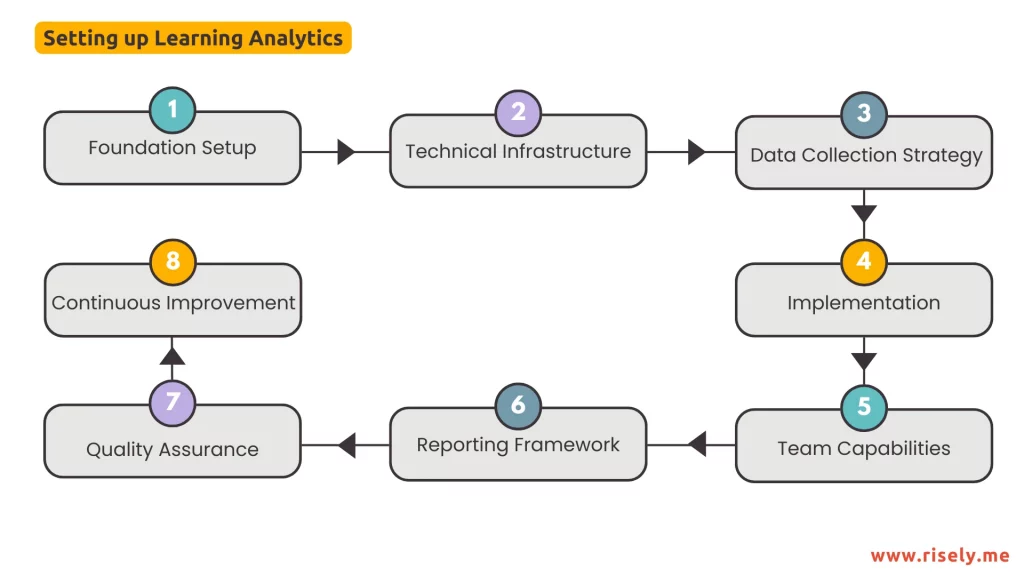Top 8 Training Metrics & How To Evaluate Them
Are your organization’s training initiatives truly effective? Are your employees gaining the necessary skills and knowledge to drive success? These questions lie at the heart of every workplace striving for growth and improvement. Measuring training effectiveness is the key to unlocking the true impact of employee development programs. But how do you know if your training efforts are hitting the mark? This blog provides you with all the answers through effective training metrics by which you can analyze the effectiveness of your training programs. From employee satisfaction to skill acquisition and performance metrics, we will explore the essential metrics that help assess the success of training programs. Let’s exploreWhat are Training Metrics?
Training metrics are quantitative and qualitative measurements used to evaluate the effectiveness and impact of employee training programs. These metrics provide valuable insights into various aspects of training, such as employee satisfaction, skill acquisition, performance improvement, and return on investment of training. By tracking these metrics as part of learning analytics, you can assess the success of your training initiatives and make informed decisions to enhance employee development and overall performance.What are the Different Types of Training Metrics?
Employee Satisfaction Metrics
Employee satisfaction metrics gauge the level of satisfaction and engagement among employees participating in training programs. These metrics help assess the training’s overall experience, relevance, and effectiveness. Common employee satisfaction metrics include:- Surveys and feedback: Employee surveys and feedback forms provide insight into employees’ perceptions of the training content, delivery methods, trainers, and overall satisfaction.
- Participation rates: Tracking the number of employees who actively enroll in training programs indicates the level of interest and engagement.
Skill Acquisition Metrics
Skill acquisition metrics measure the improvement and proficiency gained by employees in specific skills targeted by the learning and development plan. These metrics help determine whether employees are acquiring and applying new knowledge effectively. Examples of skill acquisition metrics include:- Pre and post-training assessments: Comparing employees’ knowledge or skills before and after the training program through assessments or quizzes provides a quantitative measure of skill improvement.
- Skills assessments by supervisors or trainers: Subjective evaluations by supervisors or trainers based on observed performance can provide additional insights into skill development.
Performance Metrics
Performance metrics assess the impact of training on employee job performance and productivity. These metrics help determine whether the training has positively influenced employees’ ability to perform their tasks effectively. Common performance metrics include:- Key performance indicators (KPIs): Tracking specific performance indicators relevant to job roles and responsibilities allows organizations to assess the impact of training on key business outcomes.
- Quality and efficiency metrics: Analyzing improvements in quality, accuracy, speed, or efficiency of work post-training helps measure the effectiveness of training programs.
ROI Metrics
ROI metrics evaluate the return on investment for training initiatives, quantifying the financial benefits of training compared to the costs incurred. These metrics demonstrate the value and effectiveness of training in tangible terms. Examples of ROI metrics include:- Calculation of training costs versus productivity gains: Assessing the cost of delivering training programs against the productivity, efficiency, or revenue improvements can provide a clear picture of the ROI.
- Cost savings achieved through improved performance: Measuring cost reductions, such as reduced errors, decreased rework, or decreased customer complaints resulting from the training program.

8 Best Practices for Tracking Training Metrics
Implementing effective practices for tracking training metrics is crucial to ensure accurate and reliable data that can drive informed decision-making. Here are some best practices to consider:Set up a Systematic Process
Establish a systematic process for tracking and analyzing training metrics. This process should include clear guidelines, roles, and data collection, storage, and analysis responsibilities. Define the frequency and timeline for data collection and reporting to ensure consistent tracking.
Define Relevant Metrics
Select metrics that align with the specific goals and objectives of the training program. Consider both primary metrics directly tied to the training outcomes and secondary metrics that provide additional context and insights. Tailor the metrics to the unique needs of your organization and the nature of the training initiatives. Ensure that you are tracking the metrics that really matter, and not vanity metrics as LinkedIn’s Workplace Learning Report 2023 highlights.Utilize Technology and Learning Management Systems (LMS)
Leverage technology solutions like learning management systems to streamline data collection and analysis. An LMS can automate the tracking of metrics like course completion rates, assessment scores, and employee feedback. These systems often provide built-in reporting and analytics capabilities, simplifying and generating meaningful insights from the collected data.Collect a Variety of Data Sources
Collect data from multiple sources to gain a comprehensive understanding of training effectiveness. Combine quantitative data, such as assessment scores and completion rates, with qualitative data, like employee feedback and performance evaluations. This multi-dimensional approach provides a more holistic view of training outcomes.Regularly Review and Refine Metrics
Continuously review and refine the chosen metrics based on changing organizational needs and training objectives. Regularly assess the relevance and effectiveness of the metrics in capturing the desired outcomes. Modify or replace metrics that no longer provide meaningful insights or add new metrics to address emerging training priorities.Analyze Trends and Patterns
Analyze the collected data to identify trends, patterns, and correlations. Look for common themes or areas of improvement across different training programs or employee groups. Identify factors that contribute to successful training outcomes and those that may hinder progress. These insights can help refine future training initiatives and optimize resources.Visualize Data and Communicate Findings
Visualize the training metrics data through charts, graphs, or dashboards to facilitate easy comprehension and interpretation. Present the findings to relevant stakeholders, such as training managers, HR teams, and organizational leadership. Effective communication of the metrics and their implications drives decision-making and promote a data-driven culture within the organization.Continuously Monitor and Evaluate
Monitoring training metrics should be an ongoing process. Regularly assess the impact of training on performance, employee satisfaction, and overall organizational goals. Use the metrics to identify improvement areas and track progress over time. Regular evaluation ensures training initiatives align with organizational objectives and adapt to evolving needs. By following these best practices, you can establish a robust framework for tracking training metrics, enabling your team to make data-informed decisions, drive continuous improvement, and maximize the effectiveness of your employee development initiatives.Conclusion
By understanding and implementing training metrics, organizations can evaluate the impact of training programs on employee satisfaction, skill acquisition, performance improvement, and ROI. These metrics provide valuable insights that drive data-informed decision-making and enable organizations to enhance training programs and overall employee development. Embracing a systematic process, utilizing technology, and regularly reviewing and refining metrics are essential best practices for tracking training effectiveness. By leveraging these practices, organizations can foster a culture of continuous improvement and drive success in the ever-evolving workplace. To learn about fostering a continuous learning culture in your workplace, sign up for Risely-manager’s buddy.Revamp L&D with Risely’s free resources!
Grab your free copy of L&D strategy framework today and get started.
FAQs
What are the training metrics?
Training metrics are quantifiable measures used to evaluate the effectiveness and impact of training programs. Common training metrics include completion rates, knowledge retention, skills improvement, learner satisfaction, and organizational performance indicators linked to training outcomes.
How are training metrics measured?
Training metrics are measured through various methods, including pre-and post-training assessments, surveys, observation of performance, analysis of key performance indicators (KPIs), tracking learner progress, and collecting feedback from participants and stakeholders.
What are the 5 key performance indicators for training?
The five key performance indicators (KPIs) for training are:
1) Training ROI (Return on Investment)
2) Training effectiveness or success rate
3) Learner satisfaction or feedback
4) Knowledge retention
5) Application of learned skills on the job
1) Training ROI (Return on Investment)
2) Training effectiveness or success rate
3) Learner satisfaction or feedback
4) Knowledge retention
5) Application of learned skills on the job
Other Related Blogs
What is Immersive Learning? A New Era in Education
In this blog, you’ll learn what is immersive learning and how it is changing training, increasing engagement, and influencing the future of workforce development. … Read More
The Ultimate Guide To Learning Design Tools For 2025
This blog post lists eight essential learning design tools that you need to transform your training programs into powerful learning journeys that inspire and empower every learner to reach their…
Choosing The Right Training Evaluation Tool For Optimal Results
In this blog, we’ll explore how selecting the right training evaluation tool leads to improved performance, more effective training programs, and better overall outcomes for your organization. … Read More
Training Delivery Simplified: Methods, Competencies, and Best Practices
In this blog, we’ll walk you through the training delivery process, the competencies you need, an example of a practical training delivery plan and 8 effective methods. … Read More


